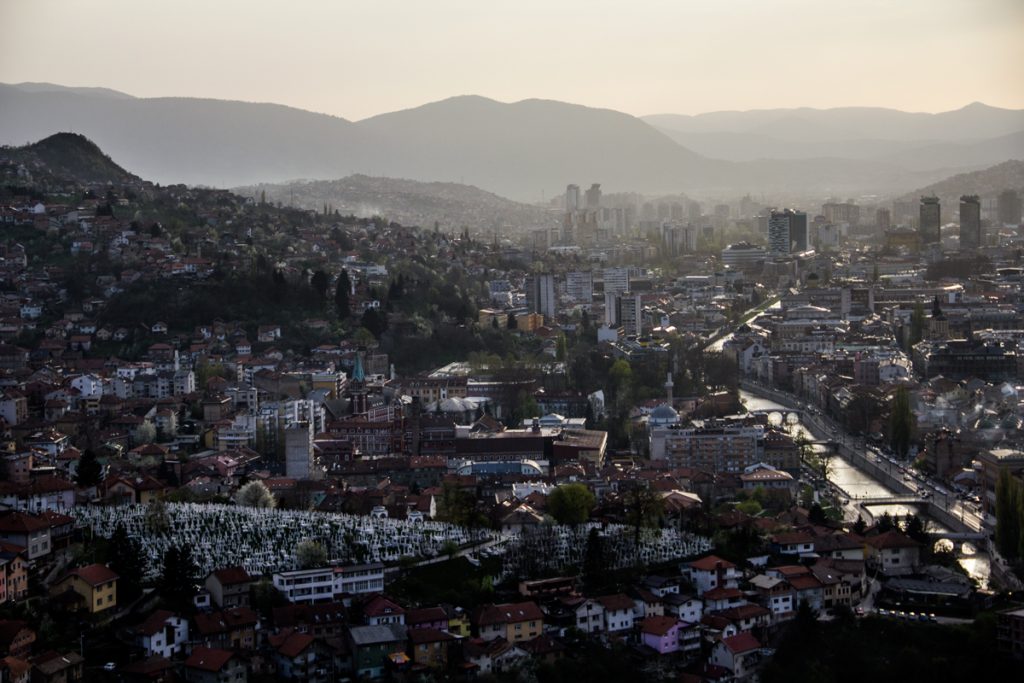
The siege of Sarajevo lasted 44 months. For 1425 days, Sarajevans were first under the occupation of the Yugoslav People’s Army, followed by the Army of Republika Srpska. In what would become the longest siege of a capital city in the history of modern warfare, independence, it seems, came at a cost.
The siege of Sarajevo lasted 44 months. For 1425 days, Sarajevans were first under the occupation of the Yugoslav People’s Army, followed by the Army of Republika Srpska. In what would become the longest siege of a capital city in the history of modern warfare, independence, it seems, came at a cost.
Photography and text by Hanieh Khosroshahi
Almost 14,000 (13,952) people were killed during the siege; more than a third of them (5,434) were civilians. With little food, people risked their lives crossing the city to get everyday essentials like water. For three and a half years, the people of Sarajevo hid in basements, darted across streets, and lived in fear of being killed. With nowhere to go, war became their reality.

Besides the human cost of the war, the urban fabric of the city was seriously damaged. As thousands of refugees fled Sarajevo, many Serbs moved in, breaking the multi-ethnic balance the city had once enjoyed (however, the percentage of Serbs in Sarajevo has decreased dramatically since the early 1990s).

With a 43% unemployment rate, ethnic divisions and tensions are still prevalent throughout Sarajevo, and remnants of war and suffering are still all around.

Despite its issues, Sarajevo exemplifies survival and resistance but most importantly, it is a symbol of peace and multi-cultural integration. The main world religions have coexisted in Sarajevo for centuries, making it a beacon of religious diversity and acceptance.

Sarajevo’s long tradition of ethnic tolerance can be seen through the intersection of the three constituent groups: Bosniak Muslims, Orthodox Serbs and Catholic Croats. During the 44 months of blockade, a sense of unity and togetherness was high amongst all Sarajevans in the capital.

Sarajevo sits at the bottom of a valley, hugged by the surrounding hills. Ravaged by war, the high number of casualties resulted in the use of Sarajevo’s open spaces as graveyards. Makeshift cemeteries are found all over the city, in parks and athletic fields, but mainly in the hills.

Perhaps the true essence of Sarajevo, its paradox and stark contrast, can be seen most visibly through its hills. It is in the hills where the essential fabric of Sarajevo gains rebirth. Despite their beauty, the hills bring back memories of war, to a time when Serb snipers were positioned there during the siege. Today, the hills commemorate the lives lost during the war of the 90s, but they’re also where families reside, where younger generations flee the hustle and bustle of the valley below, where friends go to catch up over a cup of coffee, and where lovers go to relax, embrace and watch the sunset.

The city of 400,000 inhabitants is once again a lively, vibrant, and nonchalant capital.

Most importantly, Sarajevo is where reconciliation takes place. The people of Sarajevo have long been united in their cultural diversity, and this shared heritage holds within it a sacred historical bond that binds the city together. The war was an attempt to destroy this bond. Today, Sarajevo stands as a city that has survived a campaign against diversity.

The hills honor and remember the spirit of those long gone, but they also instill a sense of hope for the nestled valley below. Despite the notion that Sarajevans must move on, the hills are a constant reminder of the suffering the city has experienced and undergone.







Brad Mazon
Thank you for posting this. It is a haunting, yet ultimately uplifting, tribute to a beautiful place, a place that I have visited, and have fallen in love with.